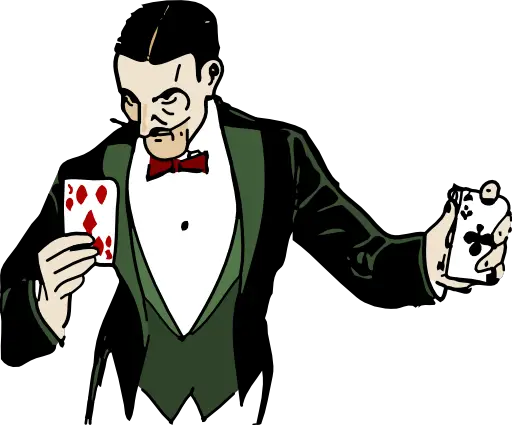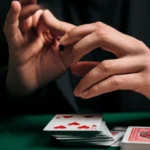Support our educational content for free when you purchase through links on our site. Learn more
How to Do a Science Trick? 10 Mind-Blowing Experiments to Amaze Your Friends! 🎩✨
Have you ever watched a magician perform and wondered, “How do they do that?” Well, what if we told you that you could be the magician? In this article, we’re diving into the fascinating world of science tricks—a delightful blend of magic and education that will leave your audience spellbound! From bending light to making eggs disappear, you’ll learn 10 incredible science tricks that are not just fun but also rooted in scientific principles.
Imagine hosting a gathering where you pull off tricks that spark curiosity and ignite conversations. Picture the look of astonishment on your friends’ faces when you reveal the secrets behind each illusion! 🧪✨ Whether you’re a parent looking to entertain your kids or a teacher aiming to make science fun, these tricks are perfect for all ages. So, grab your materials and get ready to impress!
Key Takeaways
- Engage and Educate: Science tricks are a fantastic way to combine entertainment with learning, making them perfect for kids and adults alike.
- Simple Materials: Most tricks can be performed using common household items, making them accessible and easy to set up.
- Understand the Science: Each trick is based on scientific principles like density, air pressure, and chemical reactions, providing a deeper understanding of the world around us.
- Practice Makes Perfect: Rehearse your tricks and explanations to ensure a smooth performance that captivates your audience.
- Safety First: Always prioritize safety, especially when involving children or using heat and sharp objects.
Ready to stock up on supplies? 👉 Shop for Science Experiment Kits to get everything you need for your next magical performance: Amazon | Walmart | Target.
Now, let’s dive into the enchanting world of science tricks! 🌟
Table of Contents
- Quick Tips and Facts
- The Fascinating History of Science Tricks
- 10 Mind-Blowing Science Tricks You Can Do at Home
- Keeping Water Separate: The Magic of Surface Tension
- The Walking Can: A Gravity-Defying Illusion
- The Candle That Sucks Water: A Spooky Science Trick
- The Flying Trash Bag: Air Pressure at Play
- Bending Light Through Water: A Refraction Revelation
- Reading Through an Envelope: The Power of Light
- Egg Into Bottle: A Classic Science Trick
- Toothpick Torpedo: The Physics of Motion
- The Color-Changing Milk Experiment: A Visual Delight
- Invisible Ink: The Secrets of Chemistry
- Tips for Performing Science Tricks Like a Pro
- Safety First: Precautions for Science Tricks
- The Science Behind the Magic: Why These Tricks Work
- Conclusion
- Recommended Links
- FAQ
- Reference Links
Quick Tips and Facts
Want to wow your friends with mind-blowing science tricks? 🤔 Here at Mind Trick™, we’re all about combining the thrill of magic with the wonders of science. Before we dive into the specifics, let’s lay down some ground rules:
- Start Simple: Even seasoned magicians at Mind Trick™ began with the basics. Don’t be afraid to experiment and learn as you go.
- Gather Your Materials: Most science tricks rely on common household items. Make a list and gather everything beforehand.
- Practice Makes Perfect: Rehearse your explanations and the steps involved. A smooth presentation is key to a show-stopping trick!
- Safety First: Some tricks involve heat or sharp objects. Always prioritize safety and supervise children.
- Have Fun! Science is about exploration and discovery. Embrace the unexpected and enjoy the process.
Ready to unleash your inner scientist-magician? Let’s get started! 🧪✨
The Fascinating History of Science Tricks
Believe it or not, “science tricks” have been around for centuries! Early examples of these spectacles often blurred the lines between magic, entertainment, and scientific exploration.
Think back to ancient civilizations and their fascination with astronomy, alchemy, and illusions. These early experimentations, while not always understood, paved the way for the scientific method we know today.
Fast forward to the Renaissance, and figures like Leonardo da Vinci captivated audiences with their inventions and understanding of optics, mechanics, and the human body. These demonstrations, often presented as marvels, sparked curiosity and pushed the boundaries of knowledge.
Today, science tricks continue to inspire and educate. They’re a fantastic way to make learning fun and accessible for all ages. And hey, who doesn’t love a little bit of mystery and wonder? 😉
10 Mind-Blowing Science Tricks You Can Do at Home
Get ready to amaze your friends and family with these easy-to-perform science tricks. We’ve included classics and a few surprises to keep you on your toes.
Keeping Water Separate: The Magic of Surface Tension
This classic trick demonstrates the power of density and surface tension.
Materials:
- Two clear glasses
- Water
- Salt
- Food coloring
- A playing card or a piece of stiff cardboard
Instructions:
- Fill both glasses about two-thirds full of water.
- Add a few drops of food coloring to one glass.
- In the other glass, dissolve a few tablespoons of salt into the water.
- Carefully place the card over the glass of colored water, making sure there are no air bubbles.
- Holding the card firmly, flip the glass of colored water upside down and position it directly over the glass of salt water.
- Slowly slide the card out from between the glasses.
What Happens: The colored water remains separate from the salt water, creating a visually stunning layered effect.
The Science Behind It: Salt water is denser than plain water. The card, aided by surface tension, prevents the two liquids from mixing immediately, allowing you to showcase this density difference.
The Walking Can: A Gravity-Defying Illusion
This trick makes it seem like you can control a can with your mind! 🤯
Materials:
- An empty aluminum can
- A balloon
- Wool fabric or your hair
Instructions:
- Place the aluminum can on its side on a smooth, flat surface.
- Inflate the balloon and tie it off.
- Rub the balloon vigorously against the wool fabric or your hair for about 30 seconds.
- Hold the balloon close to the can without touching it.
What Happens: The can will start to roll towards the balloon as if by magic!
The Science Behind It: Rubbing the balloon creates static electricity. This static charge attracts the can, causing it to roll towards the balloon.
Interested in other illusions and mind games? Check out our articles on Magic Psychology.
The Candle That Sucks Water: A Spooky Science Trick
This trick is a classic for a reason! It’s a bit spooky and a lot of science. 👻
Materials:
- A candle
- A plate or shallow dish
- Water
- Food coloring (optional)
- A tall glass or jar
Instructions:
- Fill the plate with water. Add a few drops of food coloring for a more dramatic effect.
- Place the candle in the center of the plate and light it.
- Carefully lower the glass over the candle, making sure the rim is submerged in the water.
What Happens: The candle flame will extinguish, and the water from the plate will be drawn up into the glass.
The Science Behind It: Burning candles consume oxygen, creating a partial vacuum inside the glass. The higher air pressure outside the glass pushes the water in to equalize the pressure.
The Flying Trash Bag: Air Pressure at Play
This trick is a great way to demonstrate the power of air pressure and convection.
Materials:
- A black trash bag
- A hairdryer
- String
- A sunny, windless day
Instructions:
- On a sunny day, hold the trash bag open and have a friend or family member help you fill it with hot air from the hairdryer.
- Quickly tie off the bag to trap the hot air inside.
- Attach a long piece of string to the bag’s handle.
- Carefully release the bag and watch it soar!
What Happens: The hot air inside the bag is less dense than the cooler air outside. This difference in density creates buoyancy, causing the bag to rise like a hot air balloon.
The Science Behind It: This trick beautifully illustrates the principles of convection and buoyancy. The hot air rises, and the cooler air rushes in to replace it, creating an upward force.
For more tricks that will have you levitating with excitement, check out our Levitation section.
Bending Light Through Water: A Refraction Revelation
This simple experiment demonstrates how light bends when it passes through different mediums.
Materials:
- A clear plastic bottle
- Water
- A laser pointer or a flashlight
Instructions:
- Fill the bottle with water.
- Shine the laser pointer or flashlight through the side of the bottle.
What Happens: You’ll see the light beam bend as it enters and exits the water.
The Science Behind It: This bending of light is called refraction. Light travels at different speeds through different mediums, causing it to change direction at the boundary between those mediums.
Reading Through an Envelope: The Power of Light
This trick seems impossible, but it’s all about manipulating light!
Materials:
- Two envelopes
- A piece of paper
- A pen
- A dark-colored piece of paper or cardboard
- A bright light source (like a lamp or the sun)
Instructions:
- Write a message or draw a simple picture on the piece of paper.
- Place the paper inside one envelope and seal it.
- Place the sealed envelope inside the second envelope and seal it.
- Hold the double-sealed envelope up to the light source.
- Roll the dark-colored paper into a tube and hold it against your eye, looking through the tube at the envelope.
What Happens: You’ll be able to see the message or drawing through the envelope!
The Science Behind It: The tube blocks out most of the ambient light, allowing you to see the light that passes through the paper and reveals the hidden message.
Egg Into Bottle: A Classic Science Trick
This classic trick is a fantastic way to learn about air pressure.
Materials:
- A hard-boiled egg, peeled
- A glass bottle with a neck slightly smaller than the egg
- A lighter or matches
- A piece of paper
Instructions:
- Carefully light a small piece of paper on fire and drop it into the bottle.
- Quickly place the egg over the mouth of the bottle.
What Happens: The egg will be sucked into the bottle!
The Science Behind It: The burning paper heats the air inside the bottle, causing it to expand and escape. As the air inside cools, it creates a lower pressure than the air outside. This pressure difference pushes the egg into the bottle.
Toothpick Torpedo: The Physics of Motion
This simple but effective trick demonstrates surface tension and propulsion.
Materials:
- A toothpick
- A bowl of water
- Liquid dish soap
Instructions:
- Carefully break off one end of the toothpick to create a pointed end.
- Dip the other end of the toothpick in the liquid dish soap.
- Gently place the toothpick in the bowl of water, with the soapy end touching the surface.
What Happens: The toothpick will shoot across the water’s surface!
The Science Behind It: Soap reduces the surface tension of water. When the soap on the toothpick touches the water, it disrupts the surface tension, creating an imbalance of forces. This imbalance propels the toothpick forward.
Looking for more fun science experiments to do with kids? Explore our Kids Magic section for more ideas!
The Color-Changing Milk Experiment: A Visual Delight
This experiment is a feast for the eyes and a great way to learn about surface tension and chemical reactions.
Materials:
- Milk (whole milk works best)
- Food coloring (various colors)
- Dish soap
- A cotton swab
- A shallow dish
Instructions:
- Pour a thin layer of milk into the dish.
- Add a few drops of different food coloring to the milk’s surface.
- Dip the cotton swab into the dish soap.
- Touch the soapy cotton swab to the surface of the milk in the center of the food coloring.
What Happens: The food coloring will swirl and dance away from the soap, creating a mesmerizing display of color.
The Science Behind It: Milk contains fat and proteins. Dish soap breaks down fat molecules and disrupts the surface tension of the milk. This disruption causes the food coloring to be pushed and pulled, creating the swirling effect.
Invisible Ink: The Secrets of Chemistry
Channel your inner secret agent with this classic invisible ink trick! 🕵️♀️
Materials:
- Lemon juice
- A cotton swab or a small paintbrush
- White paper
- A heat source (like a light bulb or an iron)
Instructions:
- Dip the cotton swab or paintbrush into the lemon juice.
- Use the lemon juice to write a message or draw a picture on the white paper.
- Let the lemon juice dry completely. The message will become invisible.
- To reveal the message, carefully hold the paper near a heat source.
What Happens: The heat will cause the lemon juice to oxidize and turn brown, revealing the hidden message.
The Science Behind It: Lemon juice contains carbon compounds. When heated, these compounds break down and react with the air, causing them to change color.
Tips for Performing Science Tricks Like a Pro
Here at Mind Trick™, we know a thing or two about putting on a good show. Here are some tips to elevate your science tricks from cool to extraordinary:
- Build Suspense: Before revealing the science, create a sense of wonder. Ask questions like, “How is this even possible?”
- Tell a Story: Weave a narrative around your trick. Maybe it’s a magic potion or a secret code.
- Engage Your Audience: Ask for volunteers or encourage predictions. The more interactive, the better!
- Practice Your Explanations: Clearly and concisely explain the science behind the trick in a way that’s easy to understand.
- End with a Bang: Finish with a trick that leaves your audience speechless and wanting more!
Safety First: Precautions for Science Tricks
While science tricks are a blast, safety should always be your top priority. Here are some essential precautions:
- Adult Supervision: Always supervise children, especially when using heat, sharp objects, or chemicals.
- Protective Gear: Wear appropriate safety goggles, gloves, or aprons when necessary.
- Proper Ventilation: Conduct experiments in a well-ventilated area, especially when working with fumes or gases.
- Handle with Care: Be cautious when handling glassware, heat sources, or sharp objects.
- Disposal: Dispose of chemicals and other materials properly according to safety guidelines.
The Science Behind the Magic: Why These Tricks Work
Science tricks aren’t about defying the laws of nature; they’re about understanding and harnessing them! Each trick we’ve explored relies on scientific principles:
- Density: The “Keeping Water Separate” trick showcases how liquids with different densities behave.
- Static Electricity: The “Walking Can” trick demonstrates the power of static charges.
- Air Pressure: The “Candle That Sucks Water” and “Egg Into Bottle” tricks illustrate the effects of air pressure differences.
- Convection and Buoyancy: The “Flying Trash Bag” trick highlights the principles of heat transfer and buoyancy.
- Refraction: The “Bending Light Through Water” trick shows how light behaves when it passes through different mediums.
- Surface Tension: The “Toothpick Torpedo” and “Color-Changing Milk Experiment” tricks demonstrate the properties of surface tension.
- Chemical Reactions: The “Invisible Ink” trick relies on the chemical reaction of oxidation.
By understanding the science behind these tricks, you’re not just performing illusions; you’re becoming a science communicator, inspiring curiosity and a love of learning in others.
Conclusion
And there you have it! 🎉 You’ve just unlocked the secrets to 10 mind-blowing science tricks that will not only entertain but also educate your audience. From the mesmerizing color-changing milk to the classic egg-in-bottle trick, each demonstration is a gateway to understanding the fascinating world of science.
Positives: These tricks are simple, require minimal materials, and can be performed at home, making them perfect for family fun or educational purposes. They spark curiosity and encourage exploration, which is exactly what science is all about!
Negatives: Some tricks may require adult supervision, especially those involving heat or sharp objects. Additionally, a few tricks may not work perfectly on the first try, so patience and practice are key.
Overall, we confidently recommend incorporating these science tricks into your next gathering or classroom setting. They’re a fantastic way to engage with science while having a blast! So, gather your materials, practice your presentation, and get ready to amaze your friends and family! 🌟
Recommended Links
👉 Shop for Science Trick Supplies:
FAQ
How to make a science trick?
To create a science trick, start by selecting a scientific principle you want to demonstrate, such as density, air pressure, or chemical reactions. Gather common household materials, and follow a step-by-step guide to perform the trick. Remember to practice your presentation and explain the science behind it to your audience!
Read more about “10 Mind-Blowing Magic Tricks with Numbers That Will Leave You Speechless! 🎩✨ …”
How do you win a science experiment?
Winning a science experiment means successfully demonstrating your hypothesis. To increase your chances of success, choose a well-researched topic, gather accurate data, and present your findings clearly. Engaging storytelling and visuals can also help captivate your audience.
Read more about “What is the Disappearing Coin Trick? … 💫”
How do I do a science experiment?
To conduct a science experiment, follow these steps:
- Ask a Question: Identify what you want to learn.
- Research: Gather information related to your question.
- Hypothesis: Formulate a testable statement predicting the outcome.
- Experiment: Design and conduct the experiment, collecting data.
- Analyze: Review your data and draw conclusions based on your findings.
Read more about “7 Mind-Bending Physics Magic Tricks with Explanation … 🎩✨”
What is the best way to do science?
The best way to do science is through hands-on experimentation and observation. Engage with the scientific method, ask questions, and seek answers through exploration. Collaborating with others and sharing findings can also enhance your understanding and enjoyment of science.
Read more about “15 Mind-Blowing Scientific Magic Tricks You Can Do at Home! 🎩✨ …”
Can I perform science tricks with kids?
Absolutely! Many of the science tricks we’ve discussed are kid-friendly and can be performed with adult supervision. They provide a fun and interactive way to teach children about scientific principles while encouraging curiosity and creativity.
What materials do I need for science tricks?
Most science tricks require simple household items such as water, food coloring, balloons, and common kitchen supplies. Check the specific requirements for each trick, and gather everything you need before starting.
Read more about “🤯 Unlocking the Secrets: 15 Paper Mind-Reading Tricks You Can Master …”
Reference Links
- Science Sparks: Science Magic Tricks for Kids
- American Museum of Natural History: The Scientific Process
- Scout Life: Amazing Science Tricks
- Science Sparks: Fun Science Experiments
With these resources, you’re well-equipped to dive deeper into the world of science tricks and magic! Happy experimenting! 🧪✨






